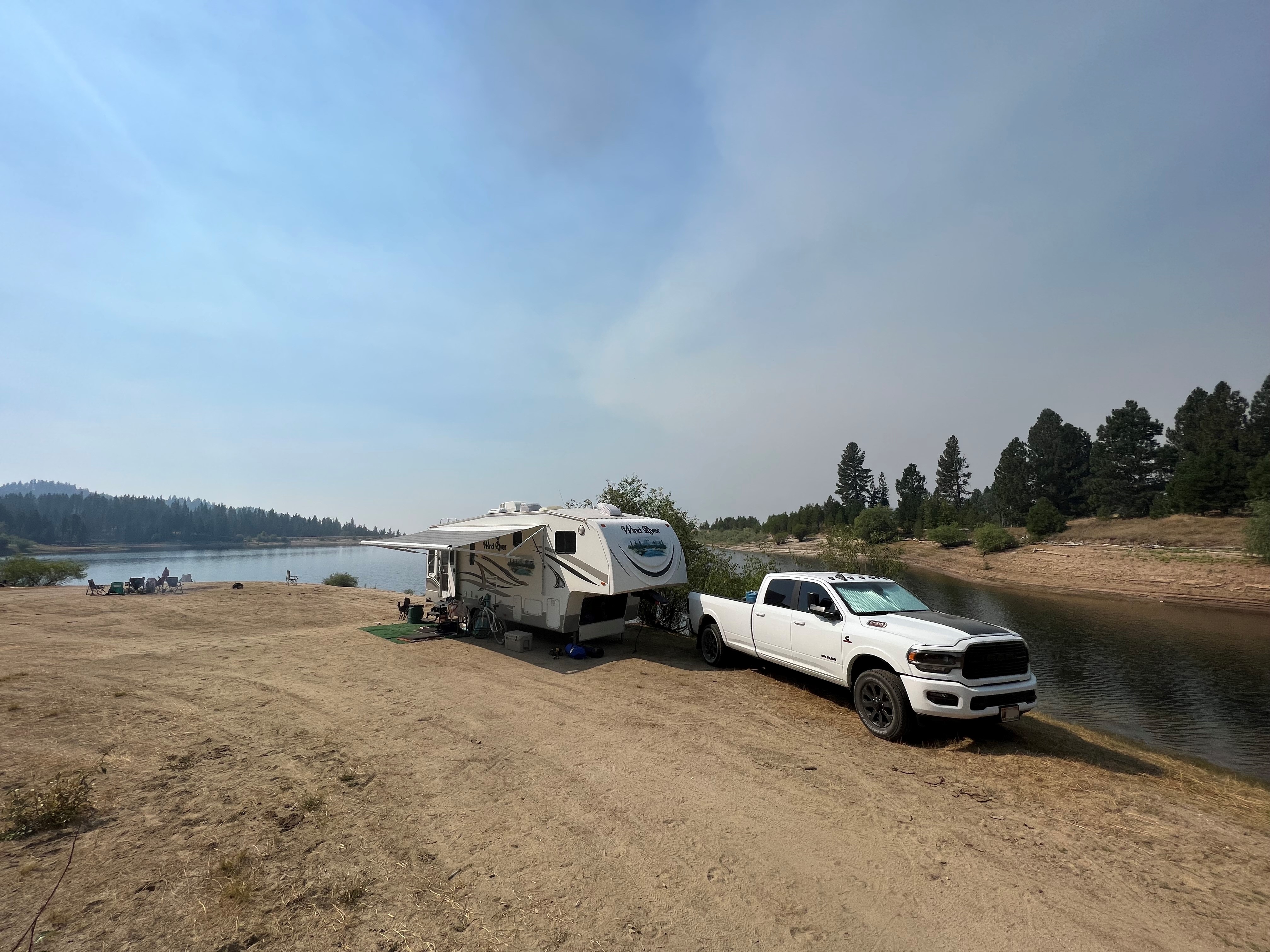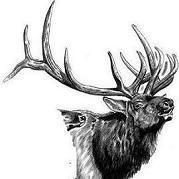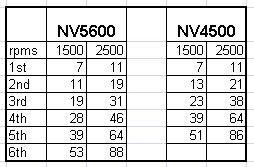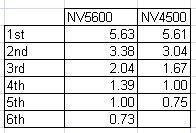
Everything posted by AH64ID
-
Install fuel pump in series with in tank pump
Couple of things...23 psi out of the front pump is nearly the same pressure ratio increase as 8 psi from a single pump, so your not working it too hard. It may not be able to handle the pressure on seals, but as far as making pressure it's fine. Both are in the 1.5-1.6:1 range. I'm still not sold on the idea, I think you may outflow the intank pump but that might be a rare case.
-
New Driveway Gate
The kids were about done with traveling, at least the milkshake in Riggins revived them enough to make it to Grangeville where they passed out and we pushed onto Weippe.
-
Anyone dyno with and without BHAF ?
You got rid of the rest of your post... But like we have discussed the IAT readings do not appear to be very accurate on the VP trucks based on the IAT location. If you were to read them like a 3rd gen you would see the big difference, the air temp and base airflow are just too similar. But without extra sensors you will never know, just realize how hot that engine bay and inlet air are, and the effects that has on compressor efficiency.
-
New Driveway Gate
Your gate was open about 7:30 on the 23rd....
-
what interval do you change oil/oil filter at?
I beleive both are a CJ oil, so whatever you want. Personally I would run the Amsoil OED 15w-40. It will still have excellent cold flow properties. If you not a preferred member shoot me a PM and we can look at cost.
-
what interval do you change oil/oil filter at?
The 5wt is the cold flow properties, and will not effect mileage once warmed up. The 40 is the warm number. On an engine the size of the ISB I doubt there is anything to be gained mileage wise. Have you thought about the cheaper, but shorter OEM interval, OE oil?
-
Little experiment with BLACK oil....
I sent off a sample to be tested two weeks ago and am very happy with the results. I only have 5700 miles on the sample, but my new tune has some different timing/rail pressure and I wanted to see how that was effecting soot in the oil (thank you EPA for the piston bowl design). Oil looks great. Between the new tune and a good cleaning of the lube system for this test everything is much lower than normal for the miles. The only things that are higher than normal are moly, boron, and magnesium. All of which is leftover from the Delo I used for the test. I expect them to be gone by next change, as the HDD doesn't use them.
-
what interval do you change oil/oil filter at?
It's a thinner 30wt.The only 30wt I know that we "can" run is the HDD 5w-30 and the 10w-30 is thinner. It's probably okay if you live on the highway at 75 without a trailer, but I wouldn't use it for towing.I run Amsoil 15w-40 AME year round. Cold temp pour point of -44°F, compared to -27° for Delo 400 LE 15w-40. I just got a UOA back for 5,700 miles on the oil. It's a little earlier than I normally sample my oil but I wanted to see how the motor (mainly soot) was liking my new tuning. I am running a bit more timing down low and a very different rail pressure map. My wear metals are the lowest to date (been sampling since 15K miles), soot is also the lowest to date for the miles. In fact it's the best UOA I have had in 11 samples. The only things that were "out of normal" were boron and magnesium, which are leftover from the Delo 400 LE I used for 3 very short oil intervals last November. Everything else looks great, but without UOA I wouldn't know.
-
Manual Swap
I was thinking about this thread as I pulled up the Montana side of Lost Trail pass on US93 on Sunday at 18K lbs in 95°+ weather. The drive with a NV4500 would have been nothing short of a PITA, or just a lot slower. Here are some examples of the differences. 3.55's, 265/75/16.
-
what interval do you change oil/oil filter at?
OEM intevals are based on OEM engines as well. Any modification to air/fuel/tuning/timing will effect how the engine treats it's oil. The OEM intervals are also based on 100K mile warranties. The 04.5-07 HPCR has a schedule A interval of 15K miles. I put that in the impossible category based on soot loading of the HPCR 5.9 in those years, but I bet it makes the 100K mile warranty mark... Oil analysis is cheap, and lets you know if the oil is working. Some engines and mod combo's don't like certain oils. I know my wifes 4Runner motor didn't like the Amsoil 5w-30 (eats the TBN to near 2 in 8K miles), but the 0w-30 has more than half of it's TBN left in the same time. That's a stock motor, analysis is the only reason I know. Don't get too crazy, 115° is the record for Riggins from 1967. Riggins is always HOT thou! Boise's record high is 111° from 1960. The radio said we were supposed to get to 111° here today, that's about 41° hotter than it needs to be for a nice summer. In hot weather synthetics have better clinging properties, and thus it takes longer for the oil to all drain back to the pan. This prevents dry starts created by the high temps. As for the TDR reports they are usually good, but not great. Take them with a grain of salt and be sure to verify the findings. Each report I look at has some decent false information in them.
-
Anyone dyno with and without BHAF ?
I did some towing at around 18K GCW a few days ago. Temps were as high as 101°, grades up to 9%, and elevation up to just over 7K feet, and a lot of it at 10-30 mph in 97-99° weather. The IAT's were VERY HOT, 115-125° pre-turbo. That's with a sealed box pulling fresh air from the fender and under the wheel well. I could not imagine how hot those temps would have been pulling air from the engine bay, especially without manifold blankets. Someone with a BHAF should put a little thermometer on the outside of the filter, I bet you would be shocked when you are working the truck. There are 2 things to consider, air filtering ability (why K&N sucks) and air source (why I think BHAF sucks).
-
Pressure Ratio formula, for tuning turbos
What were you running before?Any other changes at the time of the twins? Fuel, Cam?
-
Typical turbo wear or ?
What did you come up with?Even the best air filters will put a little wear on the blades over a few miles, what you really have to watch out for is caking of oil and dirt if you run an oiled filter. How many miles on the turbo, and what kind of air filter?
-
Share your RV mods...
That doesn't sound like a good time! Registering a trailer should lead to camping, and better times.. not heart burn.
-
Share your RV mods...
More of a restock than a mod...
-
Manual Swap
I personally have a NV5600, but my dad's 06 has the G56.
-
Manual Swap
If your going to do the swap get a 6 speed, IMHO it's not worth the time/money for a 5 speed. They work, just not as well, especially if you ever tow. If you tow heavy and often the .79 OD G56 from 05.5-07.4 is a great setup. With the exception of 5th it's about 6% lower in all the gears than the 07.4+ G56. The NV5600 is quieter (thanks to the case) and a little stronger, but as it has been mentioned the G56 is perfectly fine under 500 rwhp. I would highly recommend a different harmonic damper (I think fluidamper is your best bet on a 2nd get) if you get a G56. The OEM DMF was part of the dampening on a G56, and you don't want to run that. There are many times I wish I had the .79OD in my NV5600, and other times I am glad I have the NV5600. It's actually quite impressive what the .79OD can do when towing thru the mountains that the .73OD cannot.
-
Anyone dyno with and without BHAF ?
I think racing and towing are where the greatest potential exists to decrease power. I monitor pre-turbo and post-intercooler temps on my truck all the time. Pulling a hill with a trailer the pre-turbo IAT's are about +15° from ambient, and the post-intercooler are about +30° peak from ambient. That's with my OEM sealed box, and a 3" CAI tube to under the wheel well. I realize it's a 3rd gen, but my point is the hot engine bay increases the pre-turbo temps from ±1° of ambient to +15°, and that's with no air being pulled from the bay. (I also run exhaust manifold and turbine blankets, so my engine bay is MUCH cooler than your standard setup). What do you think the temps of the air pre-turbo are on a truck with a BHAF, especially a 2nd gen where the filter is in the rear of the bay, not near the front like on a 3rd gen. The placement of the 2nd gen IAT sensor makes it really hard to accurately monitor IAT's, its too effected by coolant and probably why the sensor was moved for 3rd gens. I honeslty beleive the baseline IAT's are similar 2nd vs 3rd, but the gauge will never show that. There is also more to consider than just the final temp number, the turbo has to work much harder to compress hot air than cold air. The intercooler may make up for the BHAF intake temps, but the turbo still is working harder. Just my
-
Anyone dyno with and without BHAF ?
I'd buy it, he went from the cool non-engine bay air, to hot engine bay air. Have any of you ever measured the air in your engine bay? I have seen a +75°, or more, increase in the temp of air from the inside of my intake tube to the outside when pulling a grade. Hot air is going to mean less power when you looking at peak power. For cruising the warm air help, but not when you are WOT. Hot air also decreases the compressor efficiency, why do you think most dyno runs are completed with the hood open... I have never understood the fascination with the BHAF, why not get a sealed box with a really good air filter???
-
Pressure Ratio formula, for tuning turbos
I don't think it's a bad thing having the primary work a little harder. The point in twins is to get the spool of a small turbo, with the flow of the big turbo. With being nearly 1:1 I would say you are setup very well. If you look at the maps for both turbo's I bet you find you are in the sweet spot for each one, which means the best, and coolest, compressor flow you can get. That also means the turbine isn't spinning too fast. What boost is your WG opening on the secondary?Do you have partial throttle numbers? Like at 20 psi overall what's the split, or at 40 psi overall.If you want to increase the work on the secondary you need to reduce the WG flow, which will increase drive pressure. I would consider leaving it, it's not like the primary is at 4:1 and the secondary at 1:1.
-
If you get lost in the woods, what do you do?
Yeah I remeber some of the grumblings back and forth about lead. The fully supported is very valid, but since I don't plink with my 10mm's I am not concerned about it.
-
If you get lost in the woods, what do you do?
I carry a G20 myself, with 15 rounds of 220gr Hard Cast Buffalo Bore ammo. The wife carries a G29 with 10 rounds of the same. I don't know why you would need a different bbl thou, they work great in the OEM bbl.
-
Help me pick a turbo...
I do believe the Super HX40 and HE351CW share a compressor wheel, so that makes sense.
-
what interval do you change oil/oil filter at?
Even thou they are much heavier loaded it's very hard to compare a hot shot use to your use. The hot shot has a higher average speed, more constant load and rpms. Your truck (like mine) sees some easy driving, some towing, some heavy towing on dirt roads, lots of slow speed forest service use, etc. Diesels are much harder on oil, it's why a gas engine could go the same, or close to, on a fraction of the oil. I would never extend oil intervals without UOA, you just don't know what you are doing. Really the only way to know is with UOA.
-
385 hp @ 2,800 rpm
It's impossible to compare anything from pre-6.7 with 4.10's to a 6.7 with 4.10's. The auto is the only trans offered with 4.10's, and with the double OD's you cruise at low rpm's even with 4.10's. 4.10's offer 20% more torque to the wheels and gear reduction than 3.42's. Here are some rpms to compare, all assuming stock (265/70 or 265/75 tires) 47RE ~2175 NV4500 ~2350 NV5600 ~2300 48RE ~2175 68RFE ~1975 AS69RC ~1975 As you can see a 6.7 will run considerably lower rpms cruising, even with 4.10's. Many people tow very heavy with 3.42 equipped 6.7's, but the load negates the use of 6th gear and 1st is under geared, but once your moving it works well (from reading about people with them). Personally I wouldn't own a 6.7 with an auto trans and 3.42's if 4.10's were an option. Fuel mileage is negligently different between the two. The fuel saved from lower rpms is not enough to counteract the fuel required to make the additional torque at the engine instead of the rear-end and show a big increase. I saw "were" and option because as of 2013 the only ratio offered in a SRW configuration. The 385hp motor is only offered in the 3500 trucks equipped with the AS69RC transmission, SRW and DRW. It's a $$ option geared towards the buyer that tows heavy and often. Where do you pull that number from? OEM rating was 1,400 rpms wasn't it?





